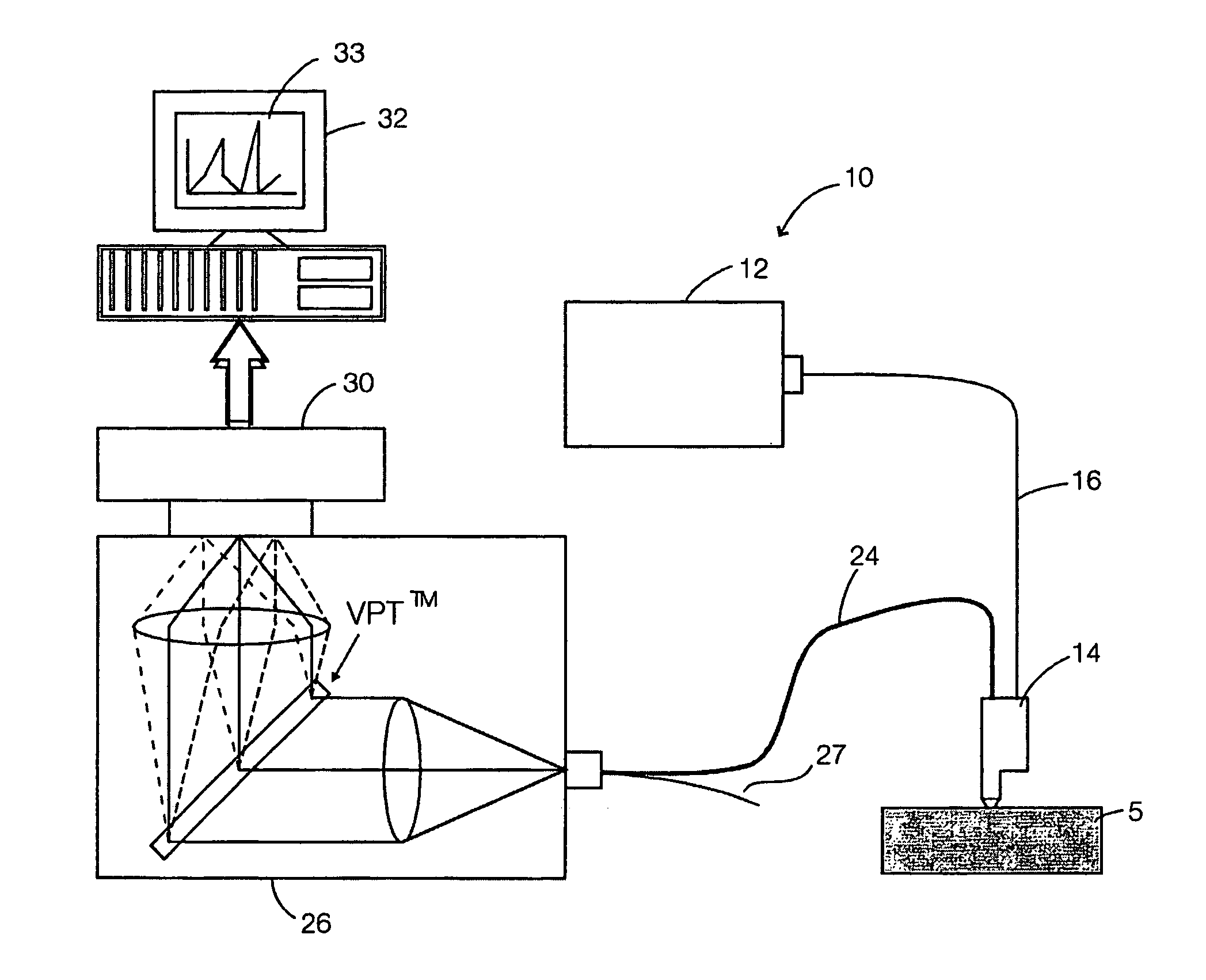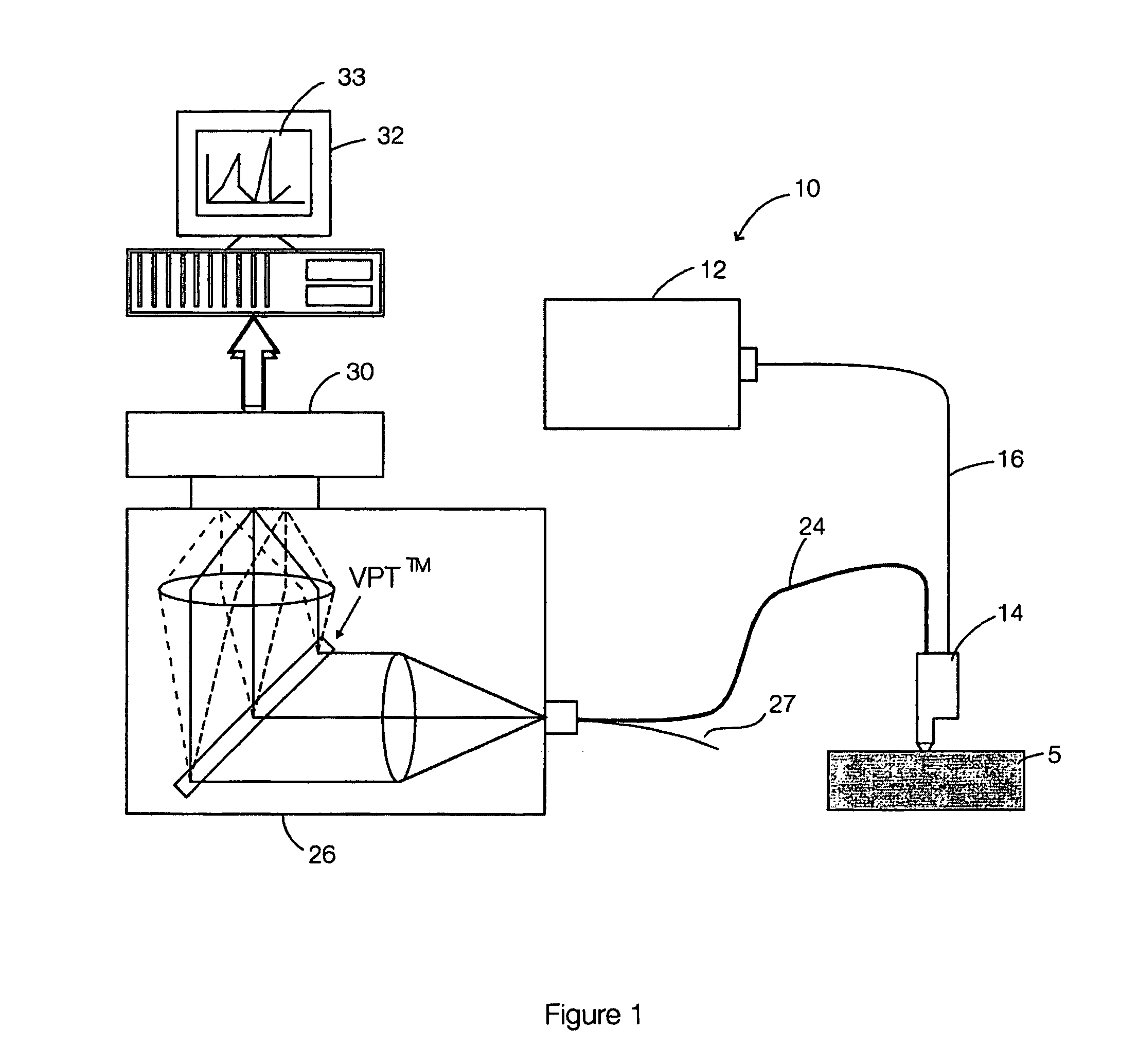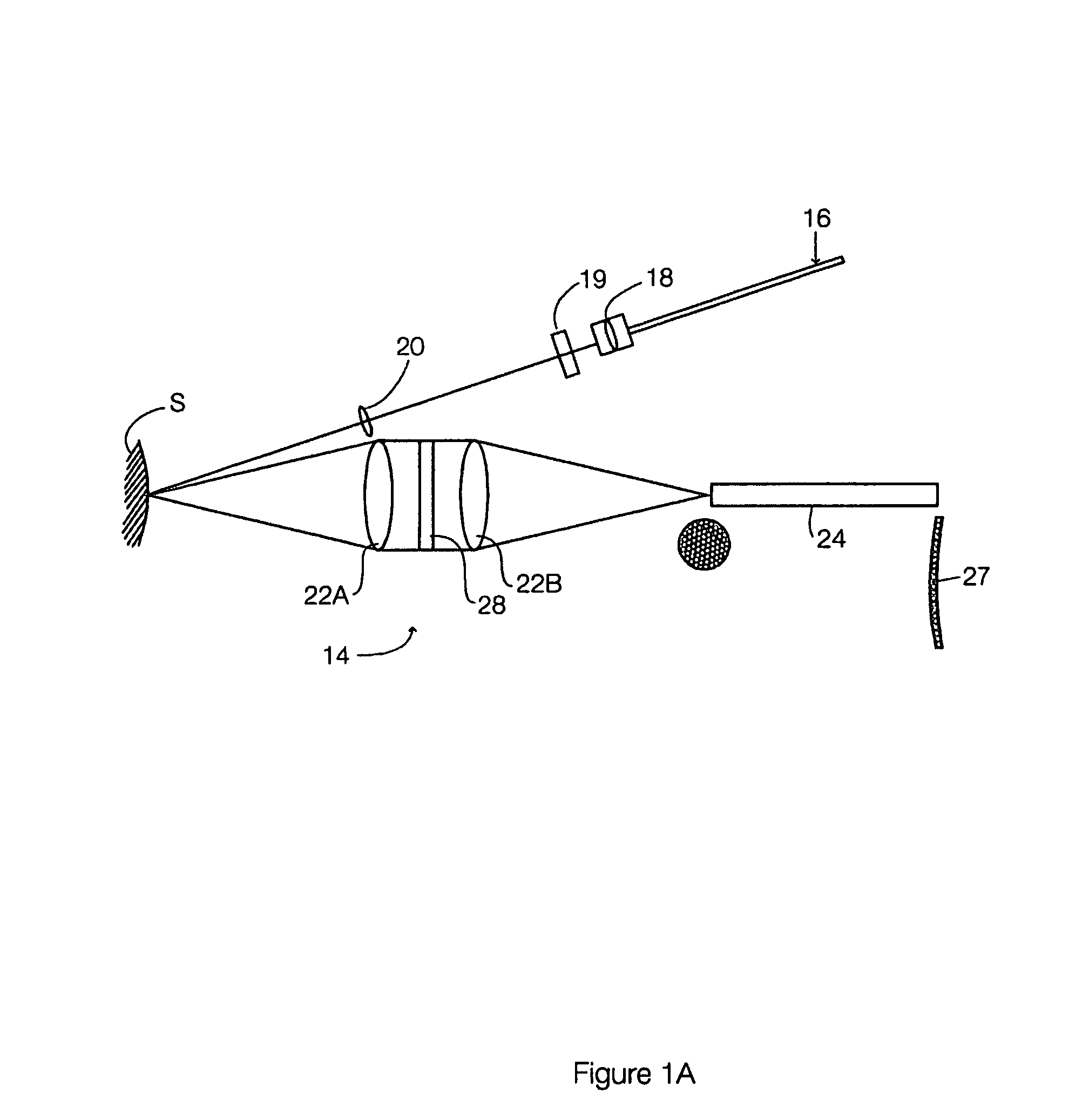Multimodal detection of tissue abnormalities based on raman and background fluorescence spectroscopy
a tissue abnormality and background fluorescence spectroscopy technology, applied in the direction of dianostics using fluorescence emission, medical automation diagnosis, sensors, etc., can solve the problems of systemic metastasis and death, invasive and impractical screening of high-risk patients, and more extensive and disfiguring surgery becomes necessary
- Summary
- Abstract
- Description
- Claims
- Application Information
AI Technical Summary
Problems solved by technology
Method used
Image
Examples
application example # 2
APPLICATION EXAMPLE #2
[0121]As shown in FIG. 11, some features of Raman spectra are different between normal to benign (compound nevus) and malignant (melanoma) skin diseases. Curve 104 is a Raman spectrum of the volar forearm normal skin of a subject of African descent. Curve 105 is a Raman spectrum of a benign compound pigmented nevus. Curve 106 is a Raman spectrum of a malignant melanoma. Curve 107 is a Raman spectrum of normal skin adjacent the melanoma of curve 106. One can see significant differences between these curves. The 1445 cm−1 peak is not visible in the malignant melanoma spectrum 106 but can be seen in both the normal black skin spectrum 104 and the benign compound nevus spectrum 105. The 1269 cm−1 peak is present in the malignant melanoma spectrum 106 and in the normal black skin spectrum 104 but not in the benign compound nevus spectrum 105. Features of these curves may be used together with features of NIR autofluorescence which forms a background to these curves ...
application example # 3
APPLICATION EXAMPLE #3
[0122]Some methods of the invention provide a plurality of classification functions. Such methods may involve selecting the one of the classification functions most appropriate for classifying the tissue section involved. For example, the classification functions may include classification functions for any one or more of:[0123]a number of different pathologies (such as, for example, two or more of basal cell carcinoma (BCC), squamous cell carcinoma (SCC), melanoma, actinic keratosis, seborrheic keratosis, sebaceous hyperplasia, keratoacanthoma, lentigo, melanocytic nevi, dysplastic nevi, and blue nevi);[0124]a number of different tissue types (such as, for example, two or more of skin, lung tissue, other epithelial tissues, such as the bronchial tree, the ears nose and throat, the gastrointestinal tract, the cervix, and the like);[0125]a number of different skin types (for example, one classification function may be provided for use with subjects having lightl...
application example # 4
APPLICATION EXAMPLE #4
[0130]A patient has a condition such as dysplastic nevus. The condition causes many nevi at various locations on the patient's body. The patient visits his physician who needs to decide whether it is necessary to take a biopsy of any of the nevi and, if so, which ones. There are enough nevi that it is not desirable or practical to take biopsies of all of the nevi.
[0131]The physician obtains a NIR spectrum for each of the nevi to be investigated. The NIR spectra include both Raman features and NIR fluorescence features. The spectra may be obtained, for example, with apparatus as described above and shown in FIG. 1. The physician can place the probe of the apparatus on each nevus in turn and then trigger the acquisition of a spectrum by activating a control. For example, the physician may press a button when the probe is over a nevus and then hold the probe over the nevus until a spectrum has been acquired. The apparatus may generate a signal, such as an audible ...
PUM
| Property | Measurement | Unit |
|---|---|---|
| wavelengths | aaaaa | aaaaa |
| Raman shift | aaaaa | aaaaa |
| Raman shift | aaaaa | aaaaa |
Abstract
Description
Claims
Application Information
 Login to View More
Login to View More - R&D
- Intellectual Property
- Life Sciences
- Materials
- Tech Scout
- Unparalleled Data Quality
- Higher Quality Content
- 60% Fewer Hallucinations
Browse by: Latest US Patents, China's latest patents, Technical Efficacy Thesaurus, Application Domain, Technology Topic, Popular Technical Reports.
© 2025 PatSnap. All rights reserved.Legal|Privacy policy|Modern Slavery Act Transparency Statement|Sitemap|About US| Contact US: help@patsnap.com



